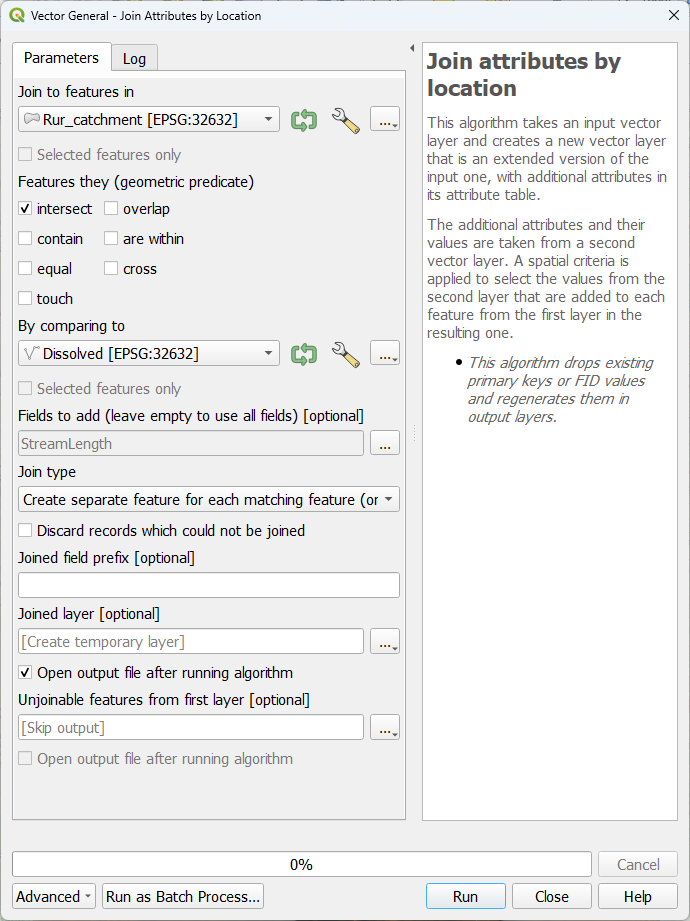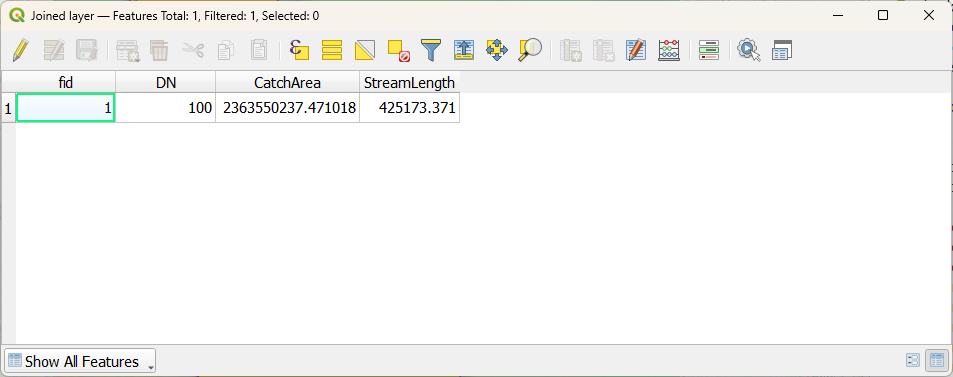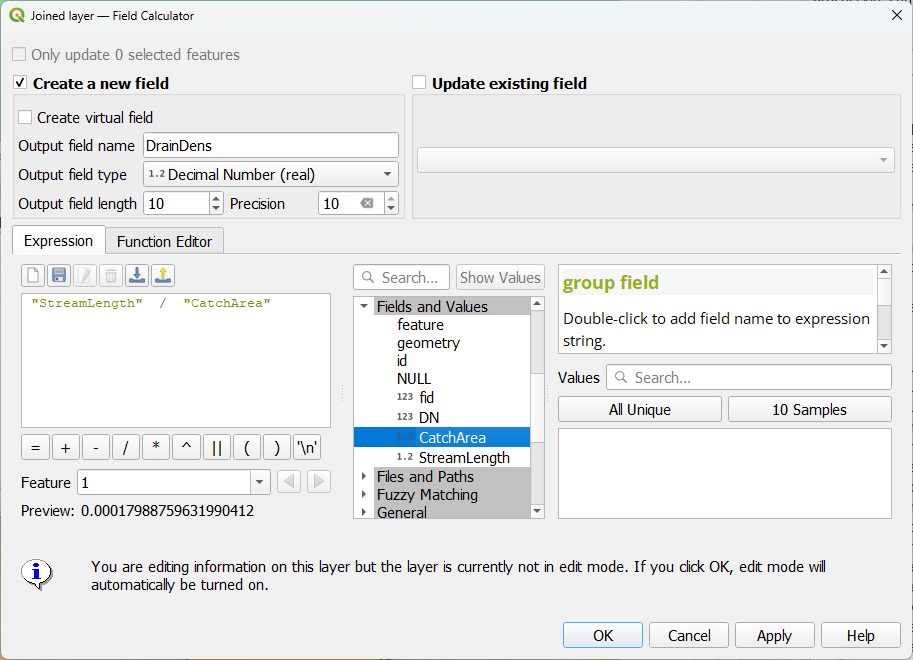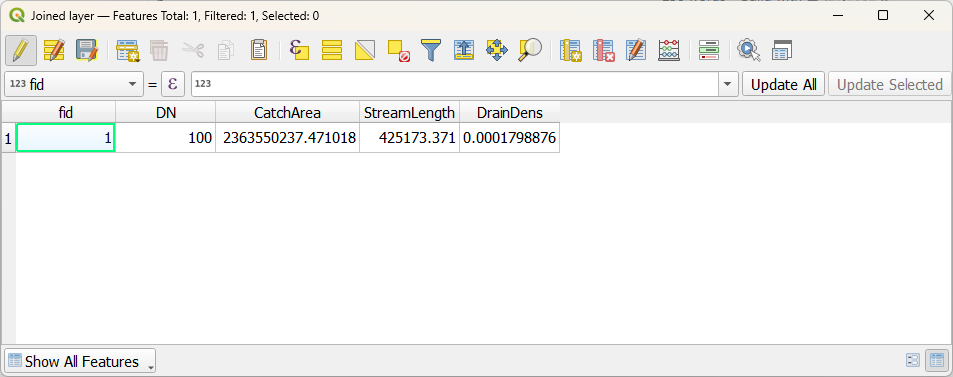4. Calculate non-spatial drainage density
Drainage density is defined as the total length of streams per unit area. We have calculated the catchment area, which is the CatchArea field in the Rur_catchment polygon layer. We have also calculated the total length of the stream network, which is the StreamLength field in the Dissolved layer. To perform the calculation, we need to have both values in the Rur_catchment polygon layer. We can do this with a spatial join.
1.In the main menu go to Vector | Data Management Tools | Join Attributes by Location....

2. Make sure that you choose Rur_catchment as the layer to Join features in By comparing to Dissolved. Choose StreamLength as the field to add. Keep the rest as default.

4. Click Run and click Close after processing.
5. Open the attribute table of the Joined layer and check the result.

Now we can easily calculate the drainage density with the Field Calculator.
6. In the attribute table, click  to open the Field Calculator.
to open the Field Calculator.
7. Type for Output field name DrainDens. Choose Decimal Number (real) as Output field type and change Precision to 10, because we will have a small number with many decimals.
8. Create the expression
"StreamLength" / "CatchArea"
by clicking the field names under Fields and values in the middle panel.

9. Click OK to apply the expression and close the dialog.
10. Click  to save the result and toggle off editing mode.
to save the result and toggle off editing mode.
Now we can see the result.

This is one value for a catchment. In the next chapter, you'll learn how to calculate a spatial drainage density.